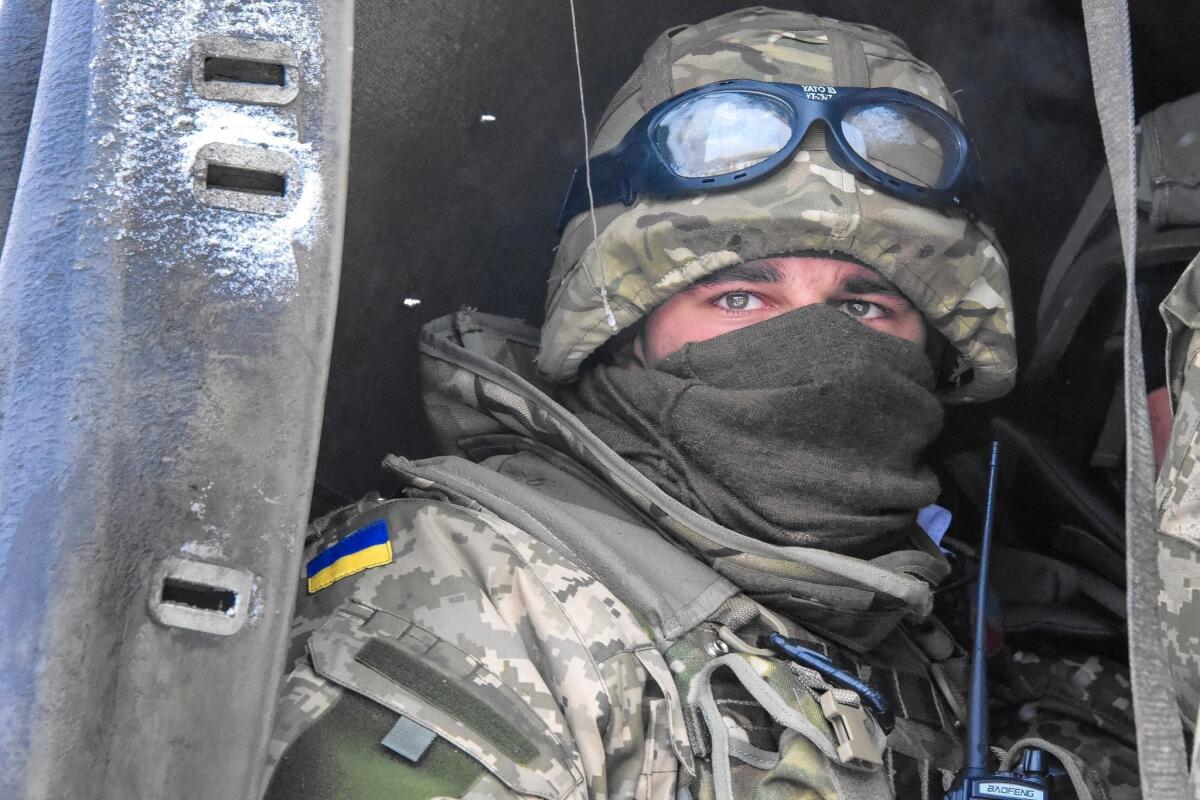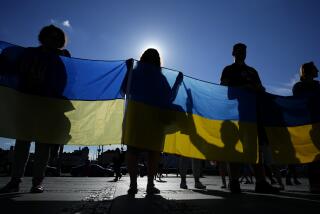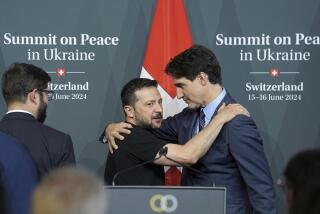‘Frozen conflicts’: Democracies decline to uphold their own values

The front lines in eastern Ukraine have moved very little in recent weeks as Russia-backed separatists and government forces hunker down for winter and a World War I-style impasse sets in.
Ukraine appears on its way to becoming the latest “frozen conflict,” a case of territorial aggression loudly condemned by an outside world unwilling to intervene and change it.
A possession-is-nine-tenths-of-the-law mentality has often prevailed in the Kremlin since the breakup of the Soviet Union 23 years ago, with Russian troops controlling Moldova’s Transnistria region since 1992 and propping up puppet governments established by pro-Russia separatists in the Abkhazia and South Ossetia regions of Georgia for the last six years.
But resorting to conquest to achieve geopolitical objectives is hardly limited to the former Soviet sphere. Frozen conflicts abound worldwide, with some of the most intractable standoffs going back more than 60 years. The quest for sovereignty over Kashmir has been the catalyst for deadly conflict since the 1947 partition of British colonial India, and Koreans’ failure to settle their 1950-53 superpower proxy war with a peace treaty keeps the books open on that dispute into its seventh decade.
Most frozen conflicts aren’t fully static, international law and security experts point out. The India-Pakistan conflict over Kashmir has flared into wars in 1947, 1965 and 1999, and numerous skirmishes in between. Shooting incidents over the demilitarized zone between North Korea and South Korea are common, and once seemingly dormant conflicts such as the one that has pitted Armenia against Azerbaijan over the Nagorno-Karabakh enclave since 1988 can suddenly heat up with new intensity.
The conflicts aren’t so much frozen as ignored by a global community with too much on its diplomatic plate or a vested interest in turning a blind eye to violations of international law and the postwar order. In most cases, there is a de facto victor, and the label of frozen conflict is applied as a fig leaf to mask reluctance of the community of democratic nations to effectively uphold its own values.
Turkey’s occupation of northern Cyprus, a member state of the European Union, is probably the most glaring example of invasion and conquest being papered over with an ineffectual peacekeeping mission that maintains the fiction of an ongoing peace process.
“The European Union doesn’t want to take on Turkey — this large, increasingly angry and paranoid country,” said Eugene Kontorovich, a professor of international law at Northwestern University. “The conflict is clearly not going to be resolved in any way favorable to the Cypriots. The Turks are now making maritime claims as natural gas has been discovered off the coast of Cyprus.”
The 28-nation EU proclaims itself committed to peace, democracy and fair dealings in trade and diplomacy. Yet it not only continues to hold out the prospect of membership for Turkey but negotiates with Ankara over Cypriot resources, as it does with Morocco over coveted commodities from the Western Sahara region it has occupied since Spain relinquished the remote African territory in 1976, Kontorovich noted.
Like the Turkish-Cypriot standoff, a resolution of the nearly 40-year-old conflict over Western Sahara is elusive because no global heavyweights are involved and the conflict between Moroccan occupiers and the Sahrawi people’s national liberation movement roils far beyond the international community’s notice.
That is not the case with Ukraine, where Cold War-era adversaries Moscow and Washington back opposing sides in the increasingly deadly conflict.
“What is most interesting about frozen conflicts is to what extent they are playing fields for great-power politics,” said Bryan Lee, director of the Eurasia Nonproliferation Program at the Monterey Institute of International Studies. “Would we have these conflicts if they were not essentially the United States and Russia engaging over what is happening in the world?”
Where superpowers have interests, the rest of the world has no effective voice in the conflict, Lee said. The European Union’s offer to Ukraine of a path to membership was the spark that ignited today’s eastern Ukrainian conflict. But it is Russian President Vladimir Putin’s fierce determination to keep the North Atlantic Treaty Organization out of what he considers Russia’s traditional sphere of influence that has the former superpower adversaries pulling the strings in the background.
“This is a colossally dangerous situation,” Lee said of the nuclear-armed states on opposite sides of the Ukraine conflict. “We’ve never had a conflict that is so close to the NATO borders and really involves the kind of visceral sense of threat the Baltic states and Poland feel about the Russians.”
More than 4,300 people have been killed, many of them civilians, in eight months of fighting in Ukraine, and the ground warfare has been accompanied by a serious escalation in airspace and maritime intrusions by Russia that now force the Western alliance to scramble fighter jets on a nearly daily basis.
NATO Secretary-General Jens Stoltenberg has warned of the risks posed to commercial aviation as Russian warplanes engage alliance member forces from Poland and the former Soviet republics of Estonia, Latvia and Lithuania.
The July 17 downing of a Malaysia Airlines passenger jet over eastern Ukraine in which all 298 on board perished has been blamed officially on “high-energy impacts.” Officials in Kiev and their Western allies accuse the Moscow-backed separatists of mistaking the Boeing 777 for a Ukrainian military transport and shooting it down from its 33,000-foot cruising altitude with a sophisticated ground-to-air missile system provided by Russia.
“It’s a mess and it’s dangerous,” Lee said of the surrogate confrontation between the U.S. and Russia. “Imagine where we would be if that had been a Polish airliner instead of Malaysian.”
More to Read
Sign up for Essential California
The most important California stories and recommendations in your inbox every morning.
You may occasionally receive promotional content from the Los Angeles Times.











